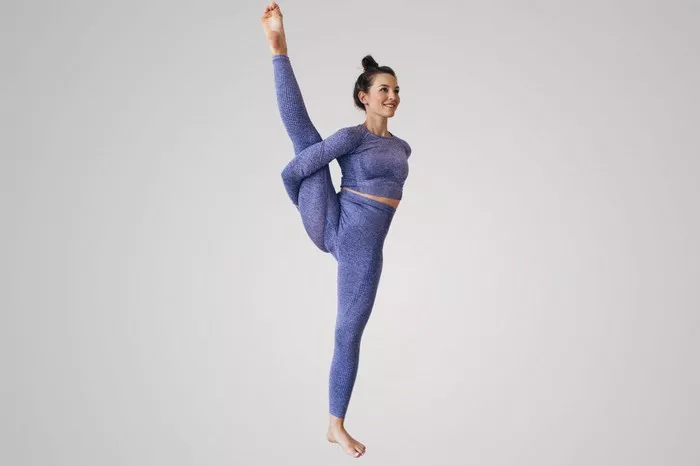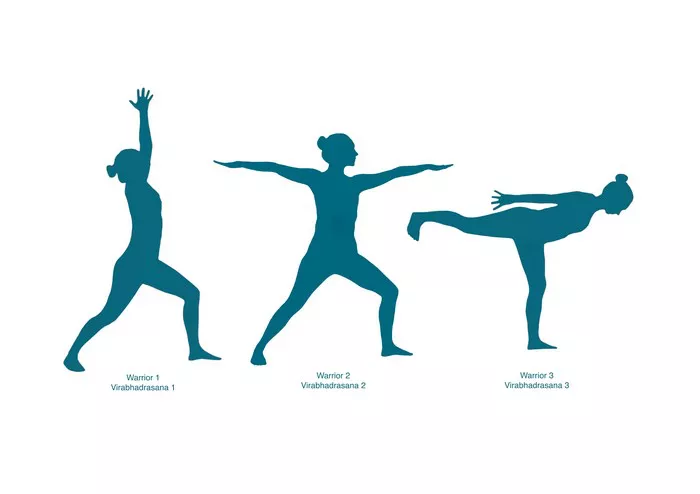Constipation, a condition characterized by infrequent bowel movements or difficulty passing stool, is a common gastrointestinal issue affecting millions of people worldwide. While there are various remedies available, yoga offers a natural and holistic approach to alleviate constipation symptoms. In this article, we will explore some of the most effective yoga poses specifically targeted at relieving constipation. These poses focus on stimulating digestion, enhancing bowel movements, and promoting overall gastrointestinal health without delving into the broader benefits of yoga.
1. Wind-Relieving Pose (Pavanamuktasana)
The Wind-Relieving Pose, also known as Pavanamuktasana, is highly effective in relieving gas and bloating, which are often associated with constipation. To perform this pose:
- Lie flat on your back with legs extended.
- Exhale and bring one knee towards the chest, clasping your hands around it.
- Hold the position for 10-20 seconds, breathing deeply.
- Release and repeat with the other knee.
- Finally, bring both knees towards the chest simultaneously, holding for another 10-20 seconds.
- Repeat the sequence 5-10 times, gradually increasing duration and intensity.
2. Cat-Cow Pose (Marjaryasana-Bitilasana)
The Cat-Cow Pose is a gentle flowing movement that stretches and massages the spine, abdominal organs, and digestive tract, promoting bowel regularity. Here’s how to practice it:
- Begin on your hands and knees in a tabletop position, with wrists aligned under shoulders and knees under hips.
- Inhale as you arch your back, dropping your belly towards the floor and lifting your gaze towards the ceiling (Cow Pose).
- Exhale as you round your spine upwards, tucking your chin towards your chest and drawing your belly button towards your spine (Cat Pose).
- Continue flowing between Cat and Cow Poses for 5-10 breaths, maintaining smooth and controlled movements.
3. Seated Forward Bend (Paschimottanasana)
The Seated Forward Bend is a restorative yoga pose that stretches the entire back body, including the spine, hamstrings, and digestive organs, helping to relieve constipation. To practice this pose:
- Sit on the floor with your legs extended in front of you and feet flexed.
- Inhale deeply, lengthening your spine.
- Exhale as you hinge forward from the hips, reaching towards your feet with your hands.
- Keep your back straight and avoid rounding your spine excessively.
- Hold the forward bend for 30-60 seconds, breathing deeply and relaxing into the stretch.
- Slowly release the pose on an inhale, returning to a seated position.
4. Supine Twist (Supta Matsyendrasana)
The Supine Twist is a gentle twisting pose that massages the abdominal organs, stimulates digestion, and promotes the elimination of waste, making it beneficial for relieving constipation. Follow these steps to perform the Supine Twist:
- Lie on your back with arms extended out to the sides in a T shape, palms facing down.
- Bend your knees and draw them towards your chest.
- Exhale as you drop both knees to one side, twisting your spine and gaze in the opposite direction.
- Keep both shoulders grounded on the floor and maintain the twist for 30-60 seconds, breathing deeply.
- Inhale to return your knees to the center, then repeat the twist on the other side.
- Continue alternating sides for 3-5 rounds, gradually increasing the duration of each twist.
5. Bow Pose (Dhanurasana)
The Bow Pose is an intermediate backbend that stimulates the abdominal organs, including the digestive system, improving digestion and relieving constipation. Here’s how to practice Dhanurasana:
- Lie on your stomach with arms alongside your body, palms facing up.
- Bend your knees and reach your hands back to grasp your ankles.
- Inhale deeply as you lift your chest and thighs off the mat, simultaneously kicking your feet into your hands.
- Keep your gaze forward and hold the pose for 15-30 seconds, breathing steadily.
- Exhale to release the pose, lowering your chest and thighs back to the mat.
- Repeat the Bow Pose 2-3 times, gradually increasing the duration as you build strength and flexibility.
6. Child’s Pose (Balasana)
The Child’s Pose is a relaxing and restorative yoga pose that gently compresses the abdomen, promoting relaxation and aiding in the relief of constipation. To practice Balasana:
- Kneel on the floor with your big toes touching and knees hip-width apart.
- Sit back on your heels and extend your arms forward, lowering your chest towards the floor.
- Rest your forehead on the mat and relax your entire body.
- Hold the pose for 1-3 minutes, focusing on deep, rhythmic breathing.
- Allow your belly to soften with each exhalation, releasing tension and promoting bowel movement.
- To release the pose, slowly walk your hands back towards your body and rise to a seated position.
7. Apanasana (Knees-to-Chest Pose)
Apanasana, also known as Knees-to-Chest Pose, is a gentle yoga posture that helps to massage the abdominal organs, stimulate digestion, and relieve constipation discomfort. Follow these steps to practice Apanasana:
- Lie flat on your back with legs extended and arms resting alongside your body.
- Exhale as you draw both knees towards your chest, wrapping your arms around them.
- Hold the pose for 20-30 seconds, breathing deeply and feeling the gentle compression in your abdomen.
- You can gently rock from side to side to further massage the digestive organs.
- Release the pose on an exhale, extending your legs back to the floor.
- Repeat the sequence 3-5 times, gradually increasing the duration of each hold.
8. Standing Forward Bend (Uttanasana)
The Standing Forward Bend is an inversion that stimulates digestion, relieves bloating, and encourages bowel movements, making it beneficial for relieving constipation. To perform Uttanasana:
- Stand tall with feet hip-width apart and arms by your sides.
- Inhale deeply, lengthening your spine.
- Exhale as you hinge forward from the hips, lowering your torso towards your thighs.
- Bend your knees slightly if necessary to maintain a straight spine.
- Allow your head and neck to relax, and let your hands hang towards the floor or grasp opposite elbows.
- Hold the pose for 30-60 seconds, breathing deeply and surrendering to the stretch.
- To release, inhale as you slowly roll up to standing, stacking each vertebra one at a time.
Conclusion
Incorporating these yoga poses into your daily routine can provide relief from constipation and promote overall gastrointestinal health. However, it’s essential to listen to your body and practice with awareness, avoiding any poses that cause discomfort or strain. Alongside yoga, maintaining a balanced diet rich in fiber, staying hydrated, and engaging in regular physical activity can further support digestive function and alleviate constipation.





















